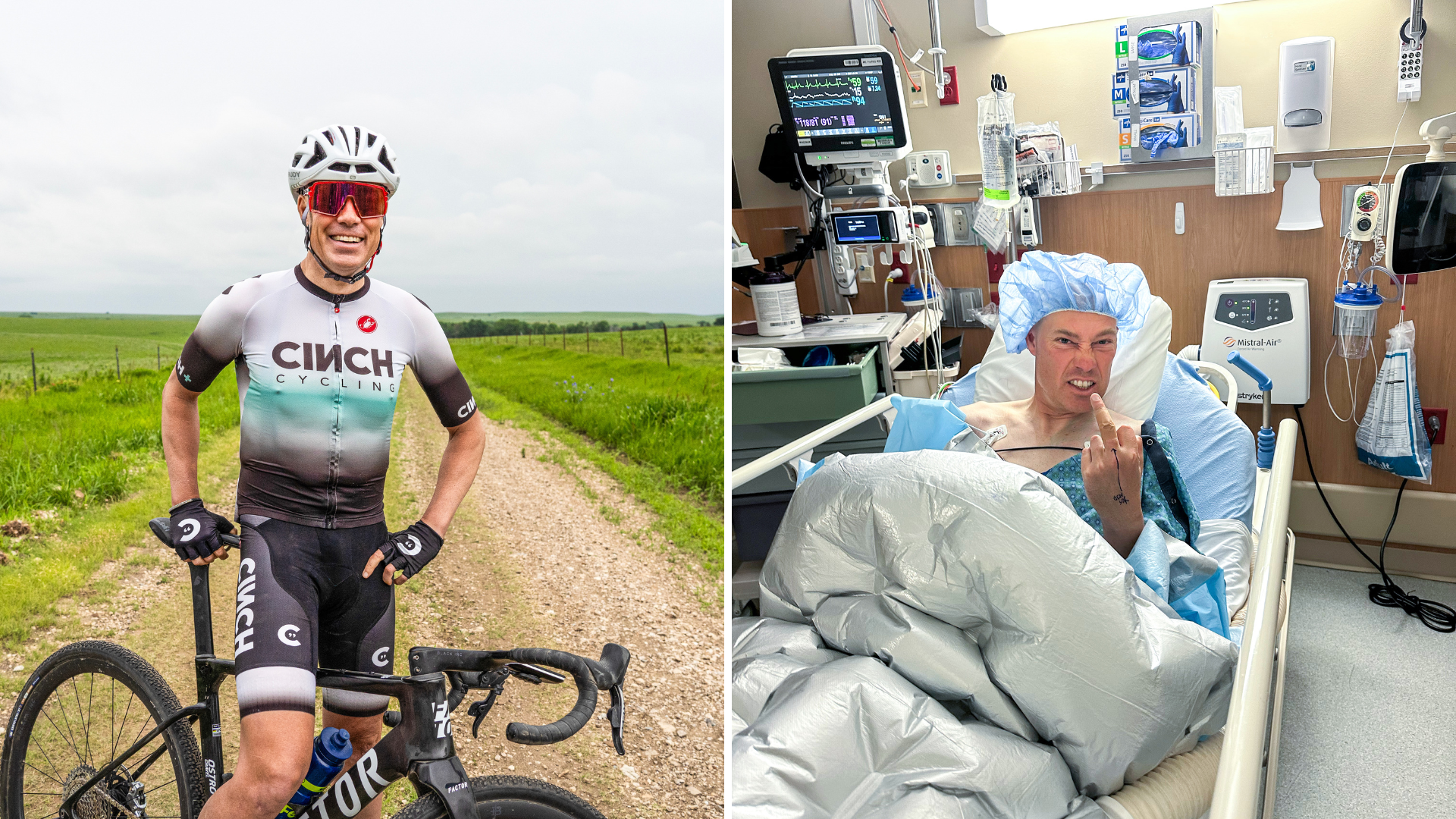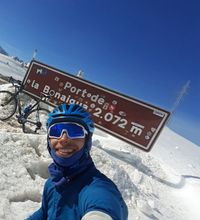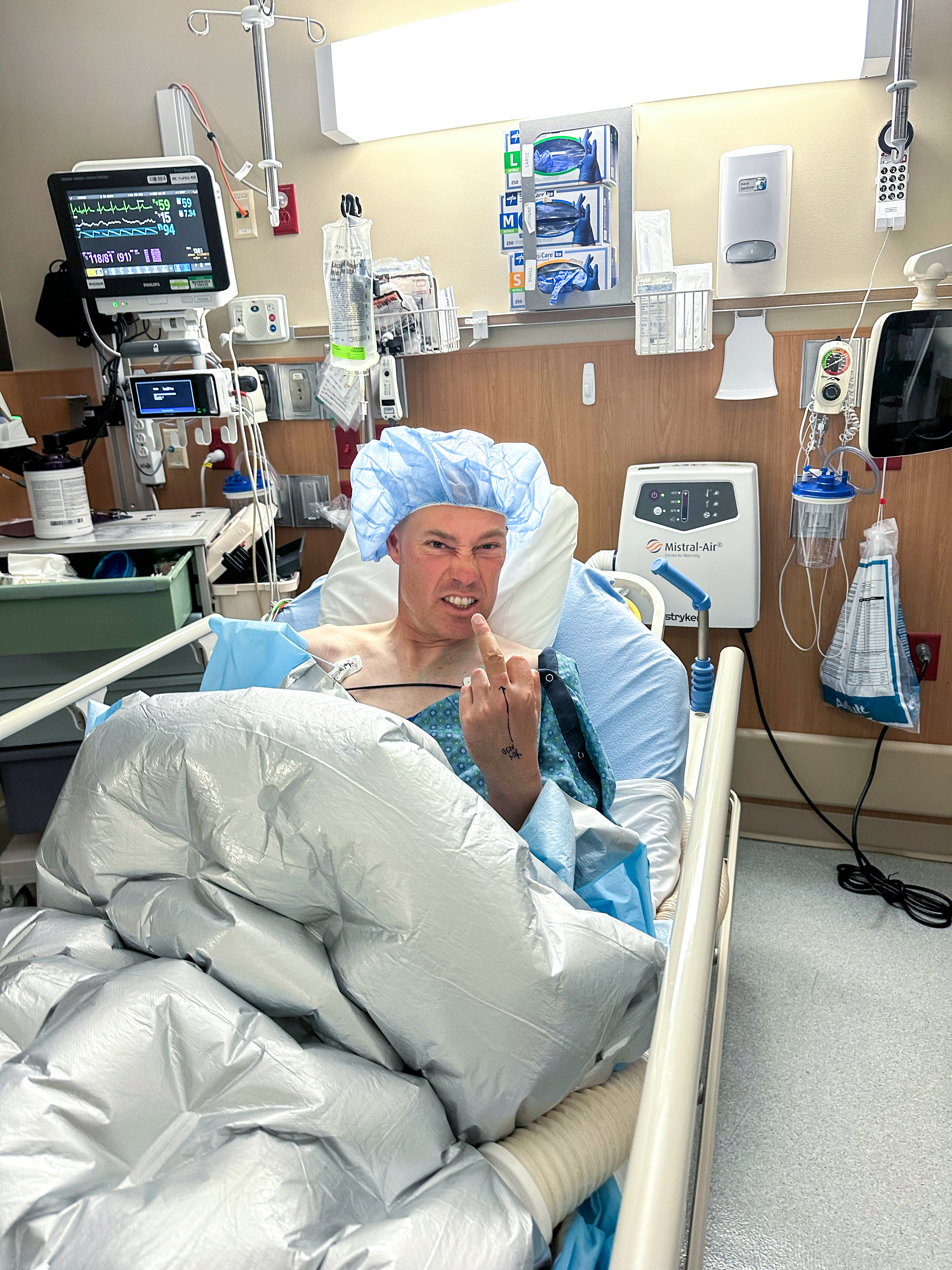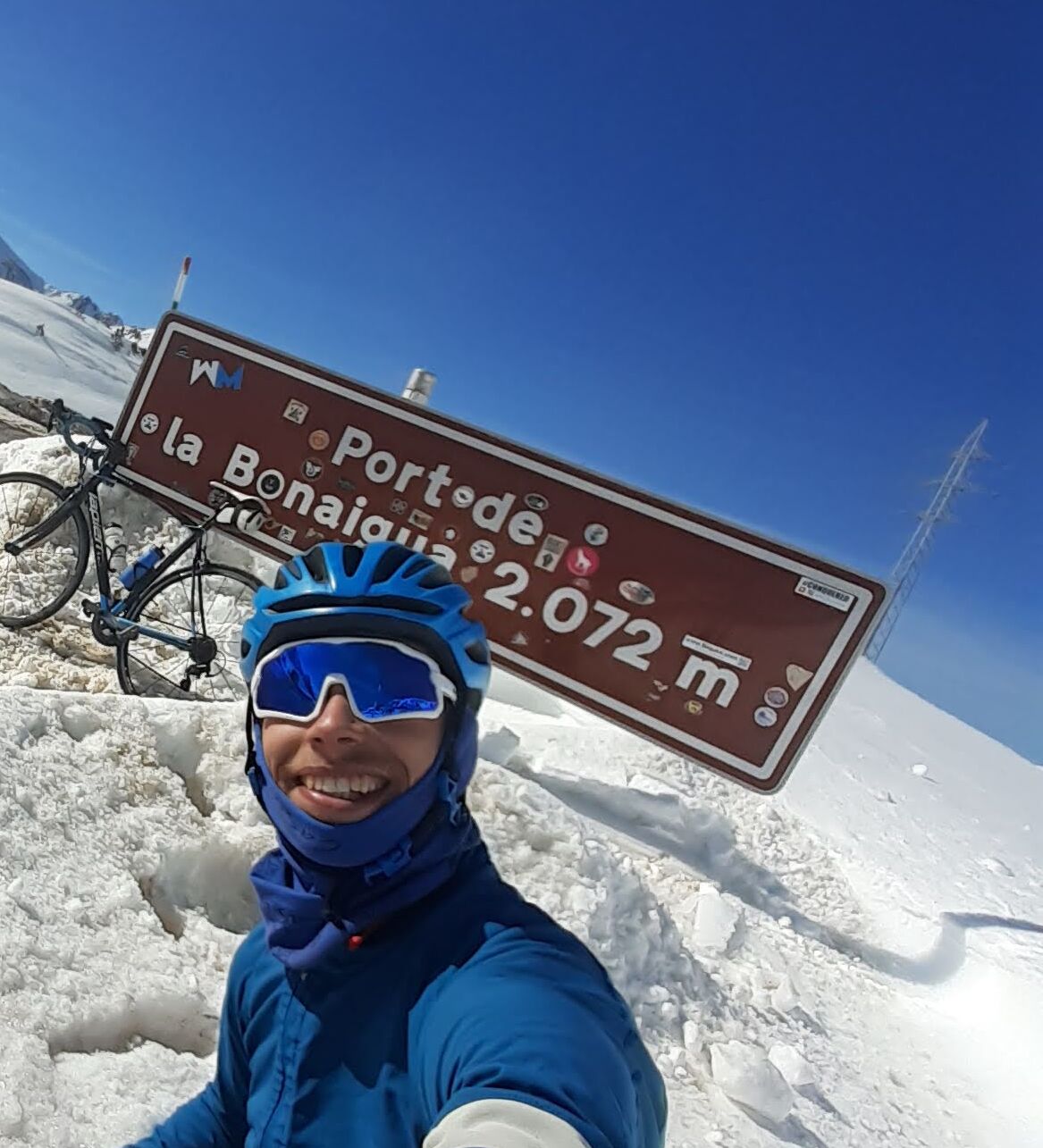Meet the rider giving cancer the middle finger
How former WorldTour pro Tom Danielson turned surgical amputation into life-changing inspiration


In autumn 2015, Tom Danielson felt he had hit rock bottom. After being notified that he had tested positive for testosterone, having already served a six-month ban for blood doping three years earlier, he had to face hard facts: “I’d lost my career, my credibility, all of my money, everything,” he says. It was a career that at its outset had promised so much, with a Vuelta a España stage win in 2006, but which ended, by his own admission, “in a ball of flames”.
By the 2020s, Danielson had established himself as a coach and was thankful to be living a steadier kind of life. But then in February last year, nearly a decade on from the ignominious end to his pro career – during which he had ridden mostly for the various guises of what is now EF Education-EasyPost – he noticed a lump on the middle finger of his left hand. “It looked like a blister from riding, exactly where I use my front brake,” Danielson tells me via video call from his home near Boulder, Colorado.
In fact, it was something far more serious than a blister. The lump was a tumour, an extremely rare form of cancer, necessitating amputation of the finger. “It was so very scary,” he remembers. Only now, 18 months down the line, can he look back and view it as the event he needed “to change my life for the better”.
Fateful discovery
When Danielson, now 46, first spotted the lump, he hid it from his wife Kourtney. “I thought she’d be super grossed out by it,” he grimaces. When after a month it was no better, he was referred to a hand surgeon. The lump was removed, and he was assured he would be OK. But as Danielson was preparing to lead 50 cyclists at a spring training camp in Mallorca, he received a call from the surgeon, who said, “Sorry to tell you this, but that thing we cut out of your hand was cancer.” Danielson recounts the conversation: “And then the doctor said, ‘A rare cancer, a sweat gland carcinoma, and we’re not sure what to do’.”
He remembers his panicked response. “‘Holy shit, ‘what does this mean?’ I was asking. I googled it and it was all bad news, and how it could spread to the lungs.” Danielson’s mind went into overdrive. “I was freaking out because I knew I hadn’t been taking care of myself: I’d been having a glass of wine or beer every night; not eating well; not riding enough; not sleeping well.” He feared he had put his body into a “toxic state”.
The next step was to undergo scans. “I said to myself: ‘If I’m clear, I’m changing my life today: I’m going on rides, I’m doing my intervals, I’m going to eat well, I’m going to stop drinking. I made a pact with myself, somewhat religiously, that I was going to change.” It was 23 March 2023, just days after his 45th birthday, when the phone rang again. “The scan came back all clear,” he smiles. “I went to Mallorca with a big gap in my finger, but I rode every day, knowing that I’d be changing my life.” Little did he know, his journey back to full health had only just begun.
Unavoidable amputation

A defiant Danielson gives a final pre-op middle-finger salute
What is sweat gland cancer?
Sweat gland carcinomas can be caused by genetic abnormalities or metabolic diseases, but Danielson believes that in his case it was caused by trauma to that area of skin on his finger sustained while cycling. “It was right in the crease where I gripped my hoods – and I always climbed a lot out of my saddle, really working the hoods hard with my hands,” he says. “There’s a good chance it came from that, or more probably it was a chemical reaction from using chain cleaner and lube, and degreasers. Six people with the same cancer have since reached out to me and they all use their hands for their occupations. Plastics, rubber, chemicals, colourings, dyes, sweating, breaking the skin over and over again, and it could have led to cancer forming. That’s why now I I always use gloves when riding and cleaning my bikes.”
CW contacted Thomas Brenn, an anatomic and skin pathologist, to check whether the causes suspected by Danielson are borne out by evidence. “From a research perspective, there is no accepted link between sweat gland carcinomas and cycling or the chemicals commonly used by cyclists,” said Brenn.
Once Danielson returned home from Mallorca, he set about finding an oncologist specialising in rare cancers. “Every night I worried that the cancer was going to come back, show up somewhere else,” he says. The oncologist’s recommended course of action came as a major shock. “He said they needed to amputate my finger – I wasn’t prepared for that,” he says. “‘What if it doesn’t work out?’ I was asking. F**k, it was so scary.”
The latest race content, interviews, features, reviews and expert buying guides, direct to your inbox!
The surgeon assured him that it was vital to remove the lymph nodes, which meant amputation was the only viable option. On 8 May, he went in for surgery. “It wasn’t as simple as chopping the finger off,” he says. “They had to rebuild my hand, rewire and reconnect it, as there are so many tendons, ligaments, bones and joints in the hand. It was really complicated.”
The surgery was a success, but he now had extensive rehabilitation ahead of him. “I was a mess: my left hand didn’t work, my whole central nervous system went haywire, and the pain was excruciating,” he recalls. “Adjusting to having that piece of my body missing has been the hardest part in all, as my brain was saying one thing, and my hand was doing another.”
Guilt and redemption
As a pro in the early 2000s, Danielson had been one of the USA’s brightest climbing and GC talents. In 2012, though, he admitted to doping after joining Discovery Channel in 2005, the team of Lance Armstrong, and he was banned for six months and had his race results from 2005 and 2006 stripped, including his Vuelta stage victory. And then, in 2015, he tested positive for synthetic testosterone and a year later accepted a four-year suspension for “unintentionally consuming” the steroid dehydroepiandrosterone.
Today, he is emphatic that “doping was the worst decision I ever made,” and insists that the 2015 positive was the result of a mistake. “I took a supplement and I didn’t know there was a banned substance in it,” he says. “It broke me so hard because I was clean.” He admits that he should have been more diligent and reaffirms his commitment to clean sport. “I can’t express how much I hate doping and I advise every single human being to stay away from it. It’s not a shortcut, it’s not sustainable, and it ruined me, my life, everything.”
A big part of Danielson’s work as a coach, where he trains multiple national champions including former Unbound Gravel winner Lauren de Crescenzo, is to guide his athletes away from the errors he made. “My life and career have had a lot of highs and lows, but I’m in a powerful position as a coach to share those truths, and to be able to contrast rights and wrongs,” he says. “When someone thinks about doping, I can have that conversation as to why they should never do it and how it hurts you. It never moved me forward, but moved me back tremendously.”
It’s this determination to fight back and rewrite his public image that spurred Danielson on post-surgery. “At first I couldn’t brake, shift or hold the handlebars,” he recalls. Nonetheless, he persisted, helped by a modified front brake and a new riding position. “Cycling has been amazing for my therapy,” he says, “and I’m so thankful I’m alive, healthy and riding my bike.”
More than a year on, Danielson is busy coaching, competing in gravel races, and hasn’t touched alcohol since his diagnosis – and, best of all, the cancer remains in remission. “I’ve had three scans since, and I’ve been given the all-clear each time,” he says. “It has been hard, scary, painful, I’ve been angry and nervous, but I wouldn’t trade what I’ve experienced, because I needed this in my life.”
A freelance sports journalist and podcaster, you'll mostly find Chris's byline attached to news scoops, profile interviews and long reads across a variety of different publications. He has been writing regularly for Cycling Weekly since 2013. In 2024 he released a seven-part podcast documentary, Ghost in the Machine, about motor doping in cycling.
Previously a ski, hiking and cycling guide in the Canadian Rockies and Spanish Pyrenees, he almost certainly holds the record for the most number of interviews conducted from snowy mountains. He lives in Valencia, Spain.
